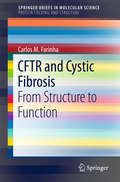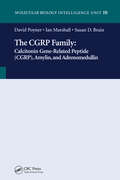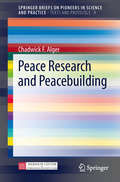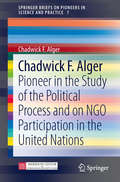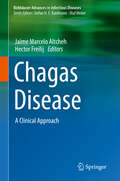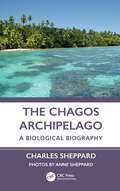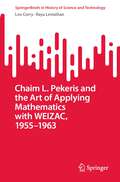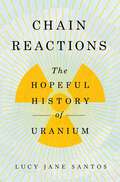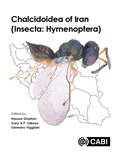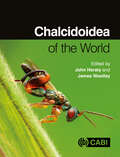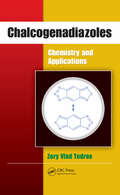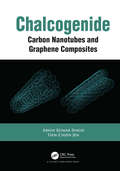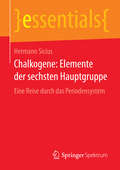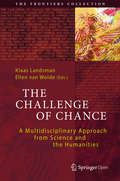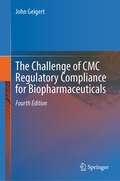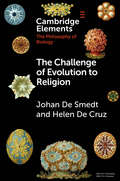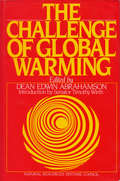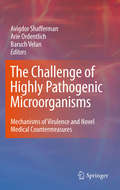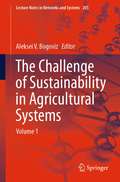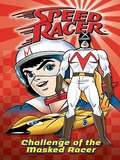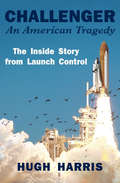- Table View
- List View
CFTR and Cystic Fibrosis
by Carlos M. FarinhaThis Brief is devoted to the CFTR protein and cystic fibrosis, and it provides an updated perspective of the genetic, functional and cellular processes involved in this conformational disorder. Starting with a historical perspective on cystic fibrosis and its clinical features, the author departs into an in-depth description of the biology of the CFTR protein, ending with a discussion on the latest approaches aimed at developing corrective therapies for cystic fibrosis.First the basic aspects of cystic fibrosis as a disorder are addressed, focusing on genetics and mutation prevalence. Then the CFTR protein is discussed in detail: its structure and classification within the ABC transporter superfamily, its biogenesis with membrane insertion and chaperone assisted folding, its glycosylation and how it regulates the endoplasmatic reticulum quality control mechanisms that assess CFTR folding status. Extra attention is given to post-ER trafficking and regulation of membrane stability and anchoring, and to CFTR functions. This is linked to the molecular mechanisms through which different CFTR mutations cause cystic fibrosis. Finally, the different efforts aiming at rescuing the basic defect, most of which aim at repairing CFTR dysfunction, are covered. Through this integrated perspective, readers will obtain a unique insight into this fascinating membrane-bound protein and its associated disease. This Brief appeals to an audience interested in human genetics, protein folding, protein trafficking and physiology.
The CGRP Family: Calcitonin Gene-Related Peptide (CGRP), Amylin and Adrenomedullin
by David PoynerThis book is based on presentations given at CGRP '98, the Third International Meeting on CGRP and related peptides held in the UK in May 1998. The principal speakers have each contributed a chapter and many of the short and poster communications will also be found here. This book follows from the tradition set by the First and Second Meetings in 1
Chadwick F. Alger: Peace Research and Peacebuilding (SpringerBriefs on Pioneers in Science and Practice #9)
by Chadwick F AlgerThis is the third volume to commemorate the 90th birthday of the distinguished scholar Chadwick F. Alger to honor his lifetime achievement in international relations, as President of the International Studies Association (1978-1979) and as Secretary General of the International Peace Research Association (1984-1987). After a brief introduction by Chad F. Alger this volume presents six of his key texts on Peace Research and Peacebuilding, covering "The quest for peace: What are we learning?"; "The Emerging Toolchest for Peacebuilders"; "Peace Studies as a Transdisciplinary Project"; "Challenges for Peace Researchers and Peace Builders in the Twenty-First Century: Education and Coordination of a Diversity of Actors in Applying What We Are Learning"; "The escalating peace potential of global governance", "There Are Peacebuilding Tasks for Everybody", and "What Should Be the Foundations of Peace Education?"
Chadwick F. Alger: Pioneer in the Study of the Political Process and on NGO Participation in the United Nations (SpringerBriefs on Pioneers in Science and Practice #7)
by Chadwick F AlgerThis volume honors the lifetime achievements of distinguished scholar Chadwick F. Alger on the occasion of his 90th birthday. Carolyn Stephenson presents Prof. Alger as a Pioneer in the Study of the Political Process and on NGO Participation in the United Nations. Part 1 offers an autobiographical note and a comprehensive bibliography of his academic publications. Part II includes three texts on "The Political Process in the UN," namely "The Researcher in the United Nations: Evolution of a Research Strategy," "Interaction in a Committee of the United Nations General Assembly" and "Interaction and Negotiation in a Committee of the UN GA." In Part III, which focuses on "Civil Society Organizations in the UN System (NGOs)," three chapters deal with "Evolving Roles of NGOs in Member State Decision-making in the UN System," "The Roles of NGOs in the UN System: From Article 71 to a People's Millennium Assembly" and "Strengthening relations between NGOs and the UN system: Towards a research agenda."
Chagas Disease: A Clinical Approach (Birkhäuser Advances in Infectious Diseases)
by Jaime Marcelo Altcheh Hector FreilijChagas disease is a potentially life threatening condition that was historically mainly endemic to Latin America. Over the last decade, however, the disease has spread to and is increasingly prevalent in other continents such as North America and Europe, with an estimated 7 million people infected worldwide. It is primarily transmitted by insect vectors that carry the parasite Trypanosoma cruzi, the disease agent. In areas where there is vector control and in non-endemic countries, it is mainly transmitted via congenital infection. Cardiac and gastrointestinal complications are common in untreated individuals.This book offers a comprehensive overview of Chagas disease, including its vectorial and congenital transmission, and molecular diagnosis, which is essential for screening, and developing and providing timely, effective anti-trypanosomal treatment. Written by experts working with infected patients on a daily basis, it discusses the pathogenesis of congenital, cardiac, gastrointestinal and oral Chagas disease, as well as its treatment and the pharmacological aspects of drug development in this area.Chapter "Chagas Disease Treatment Efficacy Biomarkers: Myths and Realities" is available open access under a via link.springer.com.
The Chagos Archipelago: A Biological Biography
by Charles SheppardThis book is the story of the natural history of Chagos Archipelago, and of the efforts of many to get it recognized as an important and protected wildlife reserve. Exploring its immense natural riches and biodiversity, both on islands and in the marine environment, this book addresses competing claims to its resources, its politics, and the desire of some commercial and political parties to exploit the area. It is about the fight to conserve a wonderland of biodiversity and obtain its protection from exploitation, especially of its reefs and other marine life. This book shows the importance of the Chagos Archipelago and why so much research was done there. Rather than being a typical research book, this work presents research in a narrative form and describes the now substantial Government, UN, and legal interest in the archipelago since the UK was told to ‘decolonise’ it. It is also the story of our planet in miniature: the archipelago encapsulates much of the world’s conservation tribulations in a way we can much more easily understand. This narrative will explore the difficulties faced by the Chagos Archipelago, including displaced people, old and derelict industries (coconut in this case), the military, politics, rich and untouched ecosystems that some want to exploit, ruined habitats on land, climate change, and territorial claims. It will examine how all of these factors have affected the natural history, biodiversity, and conservation of the archipelago. With beautiful photography of the Chagos Archipelago coral reefs and islands, as well as graphs indicating their findings, this book offers professionals, researchers, academics, and students in conservation and biodiversity an insight into one of the world’s most diverse ecosystems. It is also accessible for non‑academic readers with an interest in climate change, biodiversity, and the importance of conservation.
Chaim L. Pekeris and the Art of Applying Mathematics with WEIZAC, 1955–1963 (SpringerBriefs in History of Science and Technology)
by Leo Corry Raya LeviathanThis book describes the groundbreaking work of Chaim Leib Pekeris and his collaborators. Between 1955 and 1963 they used the first electronic computer built in Israel, the Weizmann Automatic Computer (WEIZAC), to develop powerful numerical methods that helped achieve new and accurate solutions of the Boltzmann equation, calculate energy levels of the helium atom, produce detailed geophysical and seismological models derived from the study of the free oscillations of the earth, and refine models used to predict meteorological phenomena and global oceanic tides. This book provides a unique account of the pioneering work of Chaim L. Pekeris in applied mathematics and explains in detail the background to the rise of the Weizmann Institute as a world-class center of scientific excellence. This hitherto untold story is of great interest to historians of twentieth-century science with special emphasis on the application of computer-assisted numerical methods in various branches of mathematical physics.
Chain Reactions: The Hopeful History of Uranium
by Lucy Jane SantosTracing uranium's past—and how it intersects with our understanding of other radioactive elements—Chain Reactions aims to enlighten readers and refresh our attitudes about the atomic world.Chain Reactions looks at the fascinating, often-forgotten stories that can be found throughout the history of uranium. From glassworks to penny stocks; from medicines to atomic weapons; from something to be feared to a powerful source of energy, this global history explores the scientific narrative of this unique element, but also shines a light on its cultural and social impact. By understanding our nuclear past, we can move beyond the ideological opposition to technologies and encourage a more nuanced dialogue about whether it is feasible—and desirable—to have a genuinely nuclear-powered future.
Chalcidoidea of Iran (Insecta: Hymenoptera)
by Hassan Ghahari Gary A.P. Gibson Gennaro ViggianiThe superfamily Chalcidoidea (Insecta, Hymenoptera) contains in excess of 26,000 described species worldwide, but with an estimated total diversity of more than 500,000 species the vast majority of species have yet to be discovered and described. Most chalcidoid species are parasitoids of hosts in at least 12 different insect orders, attacking the egg, larval or pupal stages, though phytophagy and other life cycles and hosts are known. Iran is the 18th largest country in the world and has a rich and diverse insect fauna, including Chalcidoidea. It is extremely interesting from a biogeographic point of view, and a paradise for an entomologist. This book summarizes the results of all prior research concerning species diversity of Iranian Chalcidoidea, including host records and distribution records by province in Iran as well as world distribution by country for 1,351 species of Chalcidoidea recorded from Iran through the end of 2019. The faunal diversity for each of the 20 families of Chalcidoidea known from Iran is also compared with that known for 15 adjacent countries. In addition, general information on world diversity, recognition, phylogenetic relationships and host relationships are given for each family. As such, the book will be an invaluable source of information for all those involved with chalcidoids, for anyone with an interest in insect systematics, and all those working in crop protection, especially biological control and Integrated Pest Management.
Chalcidoidea of the World
The superfamily Chalcidoidea (the jewel wasps) are part of the insect order Hymenoptera. The superfamily comprises more than 27,000 known species, with an estimated total diversity of more than 500,000 species, meaning that the vast majority have yet to be discovered and described. Most of the species are parasitoids, attacking the egg, larval stage or pupal stage of their host, though many other life cycles are known including gall associates and fig pollinators. This landmark volume has been co-authored by world authorities on the systematics and biology of chalcidoid wasps. It provides an introduction to the superfamily, a review of chalcidoid morphology, an overview of the fossil record, a phylogenetic framework for the revised classification of the superfamily, an identification key for the 50 recognized families, and detailed treatments of the individual families. The book consolidates much recent research on the phylogenomics of Chalcidoidea and the fossil record. This research has resulted in substantial changes to their classification, and in a review of all families, the new family groups are presented to the general scientific public for the first time. The book is an historic milestone, presenting a reclassification of the superfamily and a synthesis of knowledge on all aspects of Chalcidoidea that will serve for generations to come. Individual chapters clarify the limits of families and subfamilies based on contemporary phylogenetic studies. These chapters provide for each family: diagnostic features and extensively illustrated details of their specialized morphology, summaries of their distribution and worldwide diversity, a history of their classification history and major workers, phylogenetic relationships, natural history, use in biological control and economic impact, fossil history, and fully illustrated identification keys to subfamilies or in some cases to genera. Additional chapters present best practices for collecting, rearing from hosts, and preservation, review digital resources currently available, explore the diversity of their natural history and their human impacts, such as their use and importance to biological and natural control of pest arthropods. Chapters by worldwide authorities explore the enormous biological diversity of chalcidoid wasps including consequences of their almost unbelievable miniaturization (the most extreme known in insects), relationships with endosymbionts, special aspects of genetics, genomics, evolutionary biology and development, and brief accounts of the most significant chalcidoid researchers that have passed. For many years to come this important book will serve the needs of hymenopterists and professional entomologists, taxonomists and systematists, entomologists working on parasitic wasps as biological control agents, and ecologists working on parasite-host interactions.
Chalcogenadiazoles: Chemistry and Applications
by Zory Vlad TodresA timely and authoritative treatise on the chemistry and diverse applications of chalcogenadiazoles- the five-membered rings containing two carbons, two nitrogens, and one chalcogen (an member of group 16, the oxygen family).The number of different chalcogenadiazoles and their structural diversity make it difficult to gain a clear understanding of
Chalcogenide: Carbon Nanotubes and Graphene Composites
by Abhay Kumar Singh Tien-Chien JenThis is introductory book for researchers, scientists and students in the area of organic and inorganic composite materials. This book has addressed timely the innovative topic "chalcogenide-multiwalled carbon nanotubes and chalcogenide-bilayer graphene" composite materials under a glassy regime. This book will give a clear idea on the concepts of the newly established composite materials area, by providing interpretations of inside physio-chemical mechanism. The remarkable landmark innovations related to this newly introduced research field are included in this book. Additionally, the possible futuristic applications in the area of nanoelectronics, optoelectronics, biomedical etc are also addressed.
Chalcogenide Materials for Energy Conversion: Pathways To Oxygen Reduction And Hydrogen Evolution Reactions (Nanostructure Science And Technology Ser.)
by Nicolas Alonso-VanteThis book addresses electrocatalysis based on chalcogenides, particularly in the nanoscale domain. Special attention is paid to the hydrogen evolution reaction (HER) and the oxygen reduction reaction (ORR). The book provides an introduction to materials synthesis; the basic principles of electrocatalysis; related precious metal versus non-precious metal catalytic center chalcogenides as well as supports; and the role of such supports in stabilizing the catalytic centers. In short: pursuing a bottom-up approach, it covers the properties of this class of electrocatalysts and examines their applications in low-temperature fuel systems such as microfluidic fuel cells for portable devices. Accordingly, it is ideally suited for all professionals and researchers interested in electrochemistry, renewable energy and electrocatalysis, and non-precious metal centers for chemical energy conversion.
Chalkogene: Eine Reise durch das Periodensystem (essentials)
by Hermann SiciusDieses Essential gibt eine prägnante und umfassende Übersicht über die Chalkogene, diese vielseitigen Elemente, die in zahlreichen Oxidationsstufen auftreten können und deren Charakter von nichtmetallisch (Sauerstoff) bis metallisch (Polonium und Livermorium)reicht. Schwefel ist schon seit einigen tausend Jahren bekannt, Sauerstoff, Selen und Tellur seit etwa 200, Polonium seit gut 100 und Livermorium auch schon seit 15 Jahren. Eine ziemlich ,,alte" Elementenfamilie also?Mitnichten. Die Chemie dieser Stoffe ist vielseitig, die aktuellen Anwendungen sind zahlreich und hier werden kompakt die wichtigsten Informationen wiedergegeben.
The Challenge of Chance: A Multidisciplinary Approach from Science and the Humanities (The Frontiers Collection)
by Ellen Wolde Klaas LandsmanThis book presents a multidisciplinary perspective on chance, with contributions from distinguished researchers in the areas of biology, cognitive neuroscience, economics, genetics, general history, law, linguistics, logic, mathematical physics, statistics, theology and philosophy. The individual chapters are bound together by a general introduction followed by an opening chapter that surveys 2500 years of linguistic, philosophical, and scientific reflections on chance, coincidence, fortune, randomness, luck and related concepts. A main conclusion that can be drawn is that, even after all this time, we still cannot be sure whether chance is a truly fundamental and irreducible phenomenon, in that certain events are simply uncaused and could have been otherwise, or whether it is always simply a reflection of our ignorance. Other challenges that emerge from this book include a better understanding of the contextuality and perspectival character of chance (including its scale-dependence), and the curious fact that, throughout history (including contemporary science), chance has been used both as an explanation and as a hallmark of the absence of explanation. As such, this book challenges the reader to think about chance in a new way and to come to grips with this endlessly fascinating phenomenon.
The Challenge of CMC Regulatory Compliance for Biopharmaceuticals
by John GeigertEach year for the past three years, there have been about 50 new molecular medicines approved by the United States Food & Drug Administration (FDA), of which approximately 25% were new biopharmaceuticals. Over 200 recombinant proteins, monoclonal antibodies, antibody drug conjugates, fusion proteins, and Fab fragments are now in the marketplace in both the United States of America (USA) and European Union (EU). There are also now over 60 biosimilars available for all major classes of recombinant proteins and monoclonal antibodies. In addition, gene therapies using genetically engineered viruses and genetically engineered cells are now in the marketplace, and continually growing. This degree of change is reflected in the over 400 CMC regulatory compliance references listed in this book that were either issued or updated since the release of the third edition. Deficiencies in biopharmaceutical CMC regulatory compliance rarely result in termination of a product, but in can readily cause months if not years of delay in initiating clinical trials, or advancing clinical development stages, or even market approval. In summary, this book:Updates real-world CMC deficiency examples with current examples;Addresses current FDA and EMA requirements and expectations for CMC regulatory compliance;Now includes CMC regulatory compliance for the new gene-based biopharmaceuticals.
The Challenge of Evolution to Religion (Elements in the Philosophy of Biology)
by Johan De Smedt Helen De CruzThis Element focuses on three challenges of evolution to religion: teleology, human origins, and the evolution of religion itself. First, religious worldviews tend to presuppose a teleological understanding of the origins of living things, but scientists mostly understand evolution as non-teleological. Second, religious and scientific accounts of human origins do not align in a straightforward sense. Third, evolutionary explanations of religion, including religious beliefs and practices, may cast doubt on their justification. We show how these tensions arise and offer potential responses for religion. Individual religions can meet these challenges, if some of their metaphysical assumptions are adapted or abandoned.
Challenge of Global Warming
by Natural Resources Defense Council Dean E. Abrahamson Timothy WirthChallenge of Global Warming examines the causes and effects of global climate change.
The Challenge of Highly Pathogenic Microorganisms
by Arie Ordentlich Baruch Velan Avigdor ShaffermanThis book addresses the unique features of four microorganisms that constitute the top bioterror threat agents: Bacillus anthracis; Yersinia pestis, Francisella tularensis and Orthopoxviruses. Side-by-side updated information about their pathogenisis, virulence and epidemiology is provided in a single volume, allowing for evaluation of common features as well as common strategies for defense. Classical microbiological as well as genomic, proteomic & transcriptomic approaches towards development of strategies of novel prophylactic and post-exposure treatment and related aspects of diagnostics and bioforensics are covered. Written by top scientists, this book will be of major interest to all researchers interested in the intricate biology of highly pathogenic microorganisms, to scientists and clinicians interested in microbial pathogenesis and prevention, and to a wide range of professionals dealing with the various aspects of bio-defense.
The Challenge of Sustainability in Agricultural Systems: Volume 2 (Lecture Notes in Networks and Systems #206)
by Aleksei V. BogovizThis book brings together segmental knowledge and creates new insights on the sustainability of agricultural systems, critically analyzing not only individual system components, but also focusing on interactions between them and external environments. This book is primarily devoted to (1) agricultural agribusiness, (2) policies and institutions, and (3) farming systems. The compelling collection of chapters presents critical, comparative, and balanced perspectives on what changes are needed to achieve and maintain sustainability in agricultural systems, actively leading to new ways of thinking about these complex issues. The research presented relies on an array of methods developed within complex systems science, addresses the existing gaps in the scholarship, and uses original data collected on the development of agricultural systems. Finally, the authors provide robust conclusions and recommendations for both scholars and practitioners in the field of studying, constructing, and maintaining sustainable agricultural systems. The special focus of the book is on technologies, policies, and management systems enabling sustainable agricultural development. A rich collection of practical cases could be used to move from theories to reality. The book appeals to both academics and professionals working in the field.
The Challenge of Sustainability in Agricultural Systems: Volume 1 (Lecture Notes in Networks and Systems #205)
by Aleksei V. BogovizThis book presents a multidisciplinary collection of original contributions made by the leading scholars and practitioners on researching, building, and maintaining sustainable agricultural systems. Being the first of its kind, the book is divided into two volumes. This book presents a comprehensive and informed review of the current state of multidisciplinary knowledge on sustainability in agriculture. The gaps in the scholarly literature are identified and rigorously analyzed, presenting a clear picture of the promising research directions. The authors critically analyze the very concept of sustainable agricultural systems, primarily focusing on the interactions existing between their integral components and with external environments. Relying on the provisions of complex systems science, the scholars then discuss the best approaches and methodologies used to build a comprehensive understanding of agricultural systems, with relation to achieving and maintaining their sustainability. More than that, this book holds two rich sections on (1) agricultural economics and (2) rural sustainability. Understanding sustainable development as a movement toward clearly defined and measurable goals, a set of chapters explore those policies, practices, technologies, and management systems that have an impact on the sustainability of agricultural systems. Agricultural sustainability is an urgent issue to be addressed, and this book makes a unique contribution. Due to its practical focus, the book appeals to practitioners and policymakers working in agricultural economics, governance, and sustainability, not just academics. This is also a valuable resource for graduate students interested in agricultural systems, sustainability, as well as complex systems theory and practice.
Challenge of the Masked Racer (Speed Racer #2)
by Chase WheelerSpeed is determined to beat the legendary Masked Racer in the Trans-Country Race. But the Alpha Team has cooked up a devious plan. Can Speed and the Masked Racer work together to make sure the Alpha Team doesn't win?
The Challenge of the Sea
by Arthur C. ClarkeWhile tremendous strides toward the conquest of space occupy most of today's headlines, scientists are also exploring the vast secret recesses of the sea. Clarke takes us beneath the sea...
Challenger: The Inside Story from Launch Control
by Hugh HarrisThe former launch commentator &“offers a personal—and sometimes painful—look back at one of the darkest chapters in US human spaceflight&” (Space.com). On January 28, 1986, the space shuttle Challenger launched from the Kennedy Space Center in Florida. Seventy-three seconds after launch, the fiery breach of a solid motor joint caused a rupture of the propellant tanks, and a stunned nation watched as flames engulfed the craft, killing all seven crew members on board. It was Hugh Harris, &“the voice of launch control,&” whom audiences across the country heard counting down to lift-off on that fateful day. With over fifty years of experience with NASA&’s missions, Harris presents the story of the Challenger tragedy as only an insider can. With by-the-second accounts of the spacecraft&’s launch and a comprehensive overview of the ensuing investigation, Harris gives readers a behind-the-scenes look at the devastating accident that grounded the shuttle fleet for over two years. This book tells the whole story of the Challenger&’s tragic legacy.
Challenger: A True Story of Heroism and Disaster on the Edge of Space
by Adam HigginbothamNEW YORK TIMES BESTSELLER • &“Stunning…A heart-pounding thriller…Challenger is a remarkable book.&” —The Atlantic • &“Superb…Compelling and exhaustively researched.&” —The Washington Post • &“Devastating…A universal story that transcends time.&” —The New York Times • &“Gripping history.&” —Publishers Weekly (starred review) From the New York Times bestselling author of Midnight in Chernobyl comes the definitive, dramatic, minute-by-minute story of the Challenger disaster, based on fascinating in-depth reporting and new archival research—a riveting history that reads like a thriller.On January 28, 1986, just seventy-three seconds into flight, the space shuttle Challenger broke apart over the Atlantic Ocean, killing all seven people on board. Millions of Americans witnessed the tragic deaths of the crew, which included New Hampshire schoolteacher Christa McAuliffe. Like the assassination of JFK, the Challenger disaster is a defining moment in twentieth-century history—one that forever changed the way America thought of itself and its optimistic view of the future. Yet the full story of what happened, and why, has never been told. Based on extensive archival research and meticulous, original reporting, Challenger: A True Story of Heroism and Disaster on the Edge of Space follows a handful of central protagonists—including each of the seven members of the doomed crew—through the years leading up to the accident, and offers a detailed account of the tragedy itself and the investigation afterward. It&’s a compelling tale of ambition and ingenuity undermined by political cynicism and cost-cutting in the interests of burnishing national prestige; of hubris and heroism; and of an investigation driven by leakers and whistleblowers determined to bring the truth to light. Throughout, there are the ominous warning signs of a tragedy to come, recognized but then ignored, and later hidden from the public. Higginbotham reveals the history of the shuttle program and the lives of men and women whose stories have been overshadowed by the disaster, as well as the designers, engineers, and test pilots who struggled against the odds to get the first shuttle into space. A masterful blend of riveting human drama and fascinating and absorbing science, Challenger identifies a turning point in history—and brings to life an even more complex and astonishing story than we remember.
